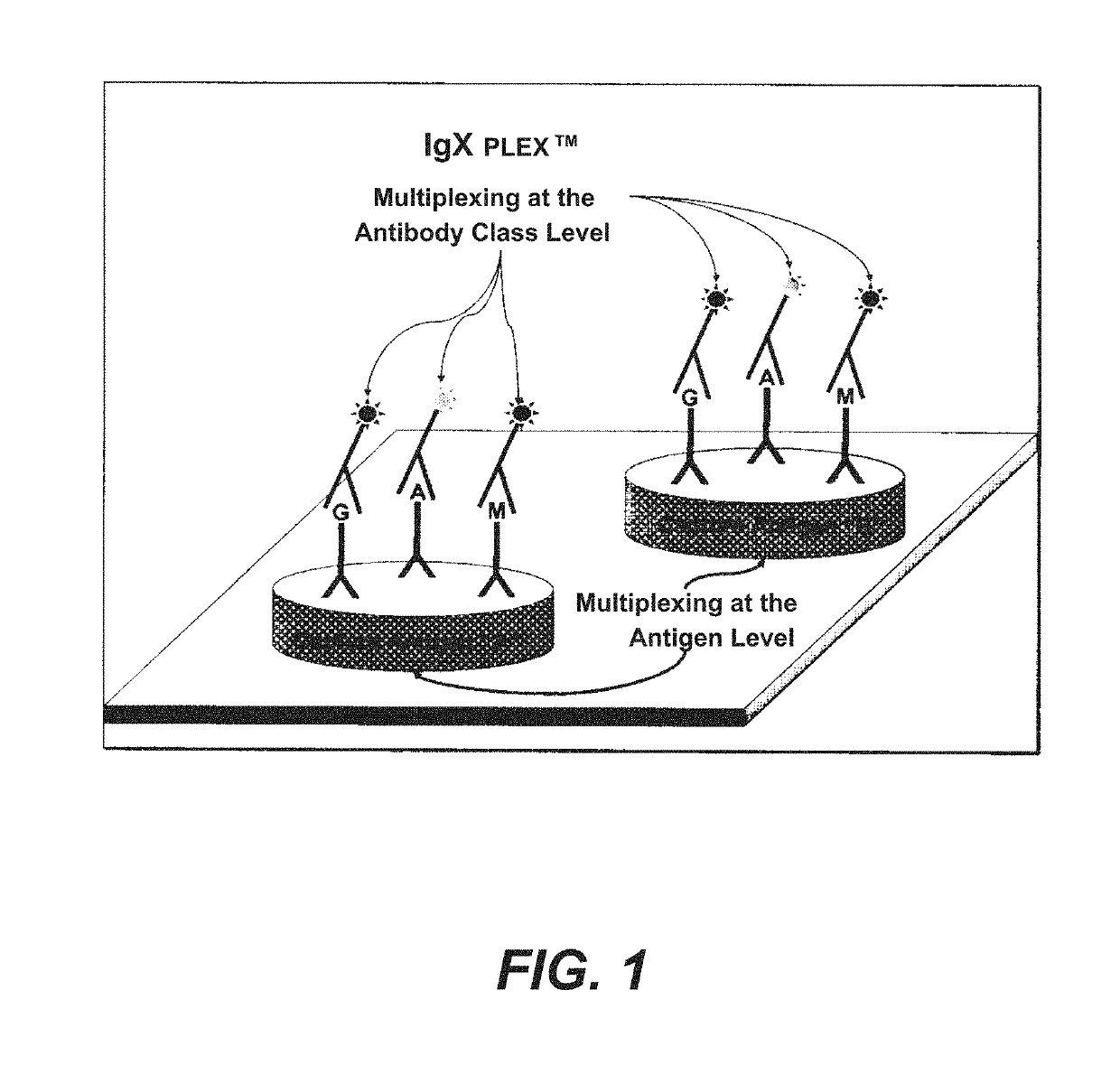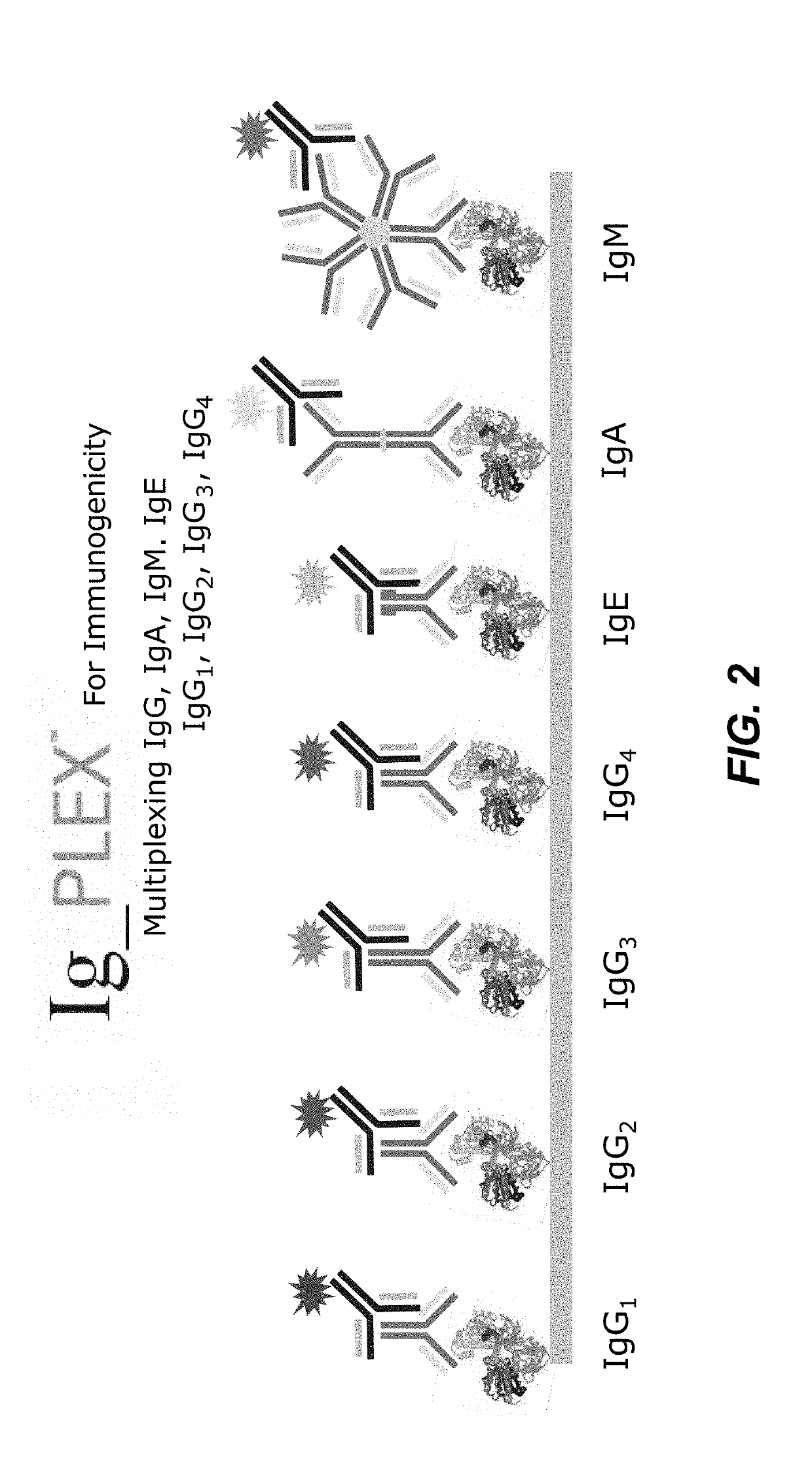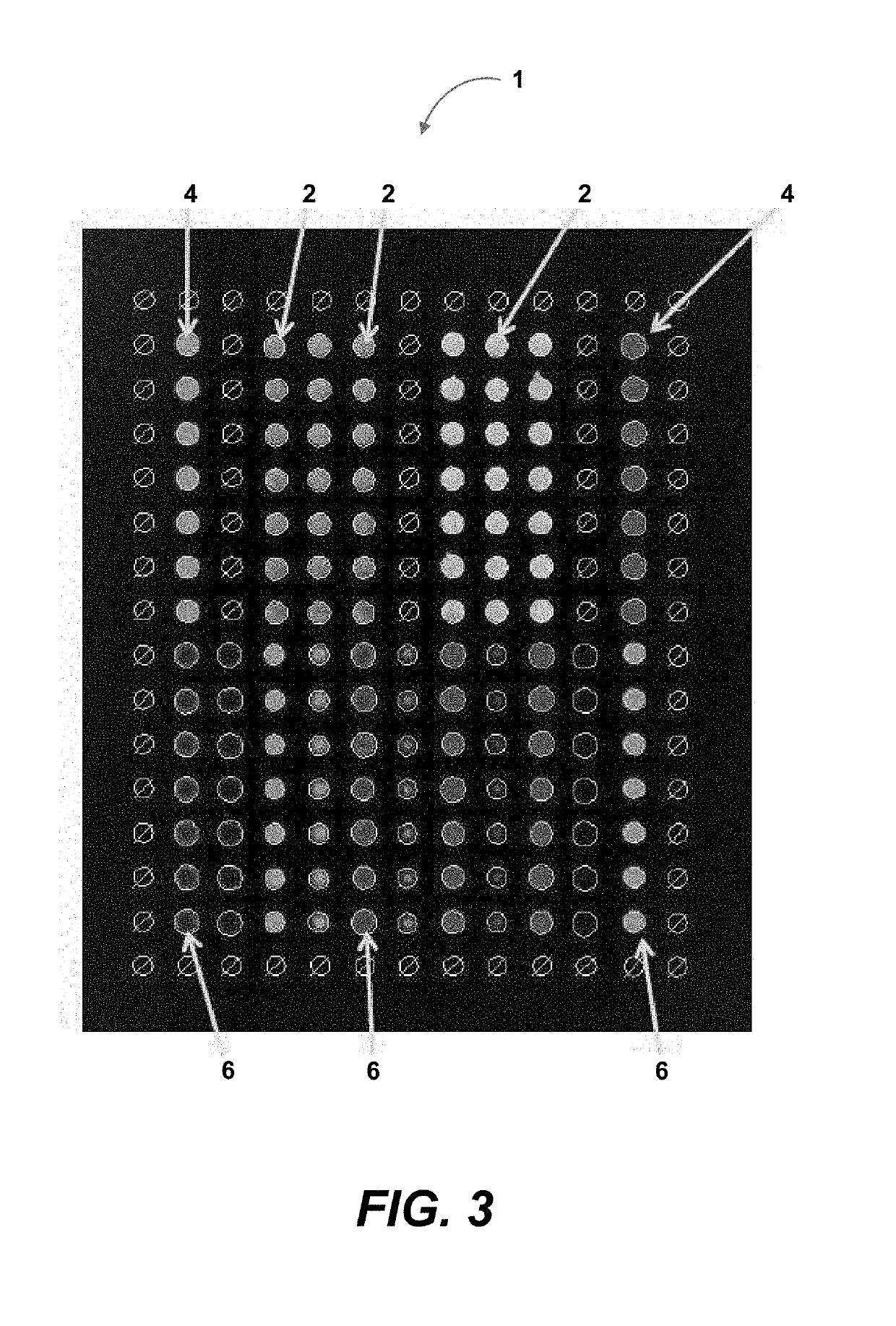Multiplex measure of isotype antigen response
a multi-isotype and antigen technology, applied in the field of biotechnology, can solve the problems of increasing the delay in treatment time, increasing the cost and possibility of analytical errors, and current immunoassay methods that do not detect antibodies of multiple isotypes and subclasses, and achieves the effect of fast and cost-effective methods
- Summary
- Abstract
- Description
- Claims
- Application Information
AI Technical Summary
Benefits of technology
Problems solved by technology
Method used
Image
Examples
example 1
Immunogenicity Testing
[0109]Wherein a therapeutic protein and / or its analytical components are immobilized on a planar microarray surface, analytical components may include subunits of the therapeutic protein, e.g., antibody fragments or fusion partners, metabolic products of the therapeutic protein, peptide components, formulation components, biosimilars, or potential cross reacting entities.
[0110]Samples collected from untreated and therapeutic protein treated patients are incubated with the immobilized microarray components. Samples are most likely to be serum or plasma. These samples may be pre-treated or prepared in such a way as to enrich for the availability of any antibodies which the patient may have developed in response to the therapeutic protein or prior exposure to similar entities. Following sample incubation, the microarray surface is interrogated for the presence of patient derived antibodies which have been captured and bound by the immobilized analytes.
[0111]The am...
example 2
ing Antibodies
[0117]The method also interrogates neutralizing effects of a patient's antibodies, i.e.; their ability to directly affect the active mechanism of the therapeutic protein
[0118]In cases where the therapeutic protein is a ligand that binds to a receptor, the receptor will be immobilized on the array surface. A fluorescently labeled derivative of the therapeutic protein will be incubated with patient serum in a competitive type immunoassay. A high fluorescent signal in this case indicates an absence of neutralizing antibodies. As the titer of neutralizing antibodies increases in a sample, they will interfere with the ability of the labeled therapeutic protein to bind the receptor and thus decrease the florescent signal on the array surface.
[0119]As depicted in FIG. 10, in cases where the mechanism of the therapeutic protein is to block a ligand / receptor interaction, the receptor is immobilized on the microarray surface. A fluorescently labeled derivative of the appropriate...
example 3
mmunogenicity
[0120]As new insulin variants are developed the need to study the range of immune responses in patients requires the ability to detect, characterize and quantitate anti-insulin antibodies. Regardless of purity and origin, therapeutic insulins continue to be immunogenic in humans. Severe immunological complications rarely occur. Current human insulin and insulin analog therapies result in decreased anti-insulin antibodies levels. Anti-insulin antibody development is also affected by the mode of delivery. For example, use of subcutaneous and implantable insulin pumps or inhaled insulin. Formulation also effects immunogenic potential with regular or semilente insulins being less immunogenic than intermediate or long acting preparations. Aggregation levels also affect immunogenicity.
[0121]Anti-insulin antibodies responses consisting of Ig classes and IgG subclasses have been reported. Primarily IgG1-4 but IgA, IgM and IgE have also been reported. IgG is implicated in the mo...
PUM
| Property | Measurement | Unit |
|---|---|---|
| length | aaaaa | aaaaa |
| length | aaaaa | aaaaa |
| length | aaaaa | aaaaa |
Abstract
Description
Claims
Application Information
 Login to View More
Login to View More - R&D
- Intellectual Property
- Life Sciences
- Materials
- Tech Scout
- Unparalleled Data Quality
- Higher Quality Content
- 60% Fewer Hallucinations
Browse by: Latest US Patents, China's latest patents, Technical Efficacy Thesaurus, Application Domain, Technology Topic, Popular Technical Reports.
© 2025 PatSnap. All rights reserved.Legal|Privacy policy|Modern Slavery Act Transparency Statement|Sitemap|About US| Contact US: help@patsnap.com



